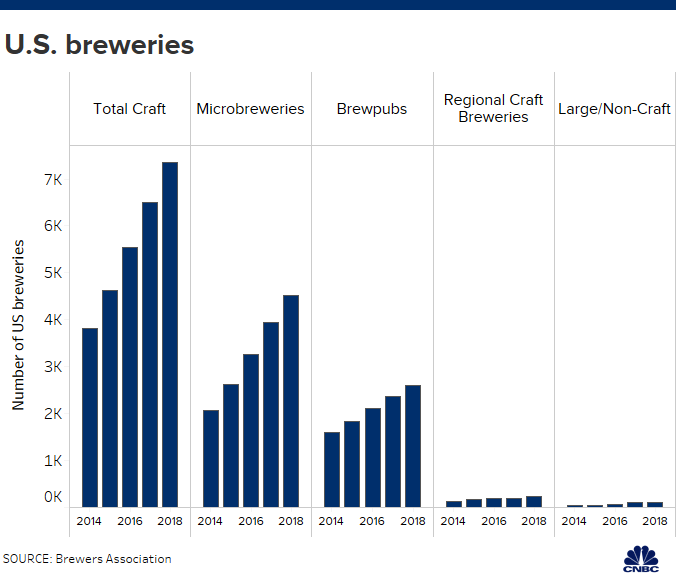
Container trucks arrive at the Port of Long Beach on August 23, 2019 in Long Beach, California.
Frederic J. Brown | AFP | Getty Images
The ships are coming in and the cargo is piling up. At the nation’s busiest container port complex in Southern California, retailers have been front-loading goods ahead of a new round of tariffs.
Take those Black Friday doorbuster TVs, for example. Between August 15th and 26th, almost 260,000 TVs were imported from China through the ports of Los Angeles and Long Beach, according to Steven Ferreira, CEO of Ocean Audit. He says that “unusual container surge” was a month ahead of schedule. Even though the president decided to delay tariffs on TVs until December, he made that decision only after retailers put in their orders and the ships were at sea.
But plenty of other products will be slapped with 15% tariffs starting Sunday. The list goes well past 100 pages and includes clothing, contact lenses and even “live camels.”
“Beginning September 1, 98% of all China goods that are imported here to the Port of Los Angeles will be affected by tariffs,” says Gene Seroka, the port’s executive director. “That’s approximately $164 billion worth of product that will be impacted.”
Trade between the U.S. and China is already down significantly. During the first six months of this year, exports from the U.S. to China fell 18% from the year ago period to $55 billion. Imports of Chinese goods to the U.S. fell 12% to $235 billion.
However, American firms have not been idle. Though exports to China are down double digits, Seroka says they are up double digits to other Asian countries like Malaysia, South Korea, Singapore, Japan and Vietnam. The result of that shift? “Right now, exports from the United States are up marginally,” he says.
All the ship traffic hoping to beat the tariffs is leading to record volumes at the Port of Los Angeles. As a result, containers are starting to stack up, potentially creating the same congestion headaches the port went through a year ago during the first round of tariffs. Commercial real estate services firm Cushman & Wakefield reports vacancy rates at local warehouses storing holiday goods are down to 1.7%, less than half the national rate. Soon there may be no space left, leaving containers stuck at the port.
Seroka says the outlook for 2020 is uncertain, as retailers wait to see if tariffs on a variety of consumer products leads to sticker shock and a pullback in spending. “We’re not hearing folks say, ‘I’m going to go invest in those five or 10 trucks,” he says. “The companies are being very pensive at this point in time, waiting to see if there would be clarity for the future.”
But for now, the goods keep coming in, and the expectation is that at least some of them will keep coming in, tariffs or no. The fastest growing segment of container traffic at the port are so-called “empties,” containers that arrive full of imports but leave empty to go back to China to pick up more goods (it costs the shipper or the import/export company $250 per empty). The number of “empties” is up 21%.
“With a relatively strong US economy,” Seroka says, “you and I are still buying goods at the store, we need to keep those containers moving.”

